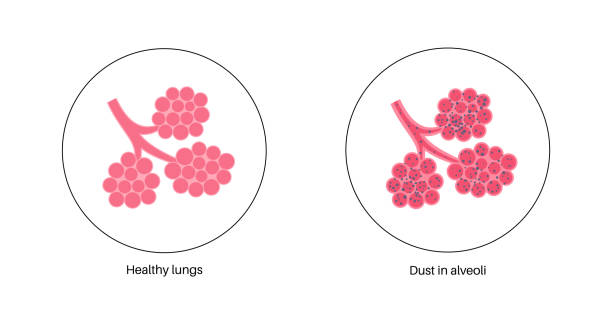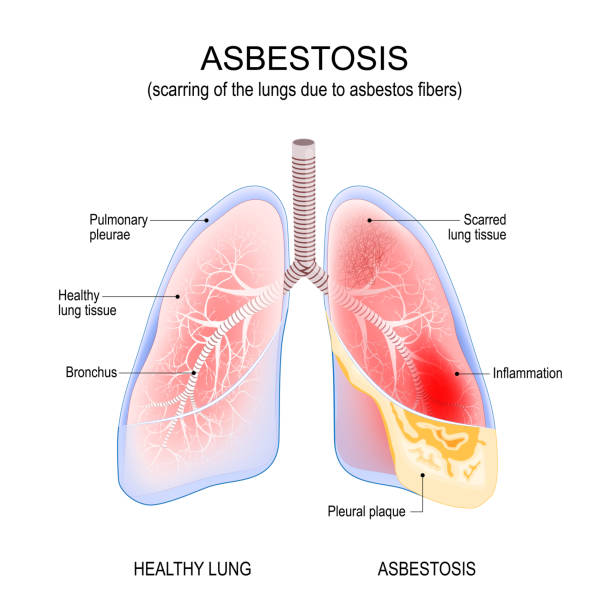As the disease progresses, common symptoms can become more severe, affecting an individual’s ability to breathe normally.
What Part Of The Lung Does Asbestos Dust Affect?

Asbestos primarily affects the interstitial areas of the lungs, which are the tissues around the alveoli (air sacs) where gas exchange occurs.
Asbestos particles, once inhaled, can become lodged in these tissues, leading to inflammation and scarring (fibrosis).
This scarring can spread and affect the pleura (the lining of the chest cavity and lungs) as well, which can lead to pleural thickening or plaques.
How Does Asbestosis Affect The Lungs

Asbestosis affects the lungs by causing progressive fibrosis (scarring) of lung tissue. This scarring:
- Reduces lung elasticity: Scarred lung tissue is stiffer and less elastic than normal, making it difficult for the lungs to expand and contract.
- Impairs gas exchange: The thickening and stiffening of lung tissue hinder the efficient exchange of oxygen and carbon dioxide.
- Decreases lung volume: As fibrosis worsens, the total volume of air the lungs can hold is reduced.
These changes lead to symptoms such as shortness of breath, persistent cough, and limited physical endurance.
Over time, asbestosis can also lead to complications like respiratory failure and an increased risk of lung infections.
What Does Asbestos In The Lungs Look Like?

Asbestos in the lungs typically manifests as small, fibrous particles that can be identified under a microscope in lung tissue samples. These fibers are thin, long, and often have a hooked or straight shape.
Over time, the presence of asbestos fibers leads to visible changes in the lung, including:
- Pleural plaques: Thickened patches on the pleura, which are the outer linings of the lungs and chest wall.
- Diffuse pleural thickening: More extensive thickening of the pleura compared to localized plaques.
- Interstitial fibrosis: Scarring within the lung tissue that appears as irregular, fibrous bands on imaging studies like X-rays or CT scans.
These changes can be seen as dense, irregular areas on radiographic images, indicating the presence of scarring and other abnormalities caused by the asbestos fibers.
Importance of Early Detection and Management
Early detection and management of asbestos exposure are critical for several reasons:
- Alleviating Symptoms: Recognizing asbestosis symptoms early, such as shortness of breath and coughing, can help relieve symptoms more effectively and improve quality of life.
- Slowing Disease Progression: Early intervention may help slow the progression of other asbestos-related diseases such as mesothelioma and lung cancer. While the scarring itself is irreversible, measures can be taken to prevent further damage.
- Preventing Complications: Early management reduces the risk of severe complications such as respiratory failure, pulmonary hypertension, and heart failure.
- Improving Outcomes: Patients who receive an early diagnosis and start health management promptly generally have better long-term health outcomes.
Management strategies typically include reducing exposure to any further asbestos materials, using medications to manage lung inflammation, participating in pulmonary rehabilitation, and regular monitoring of lung function.

